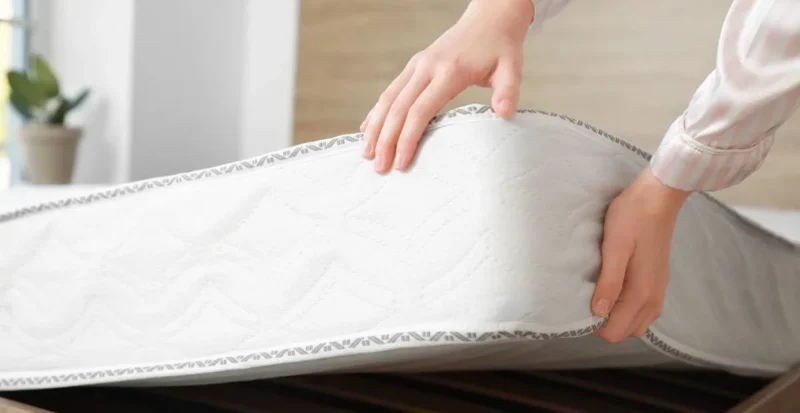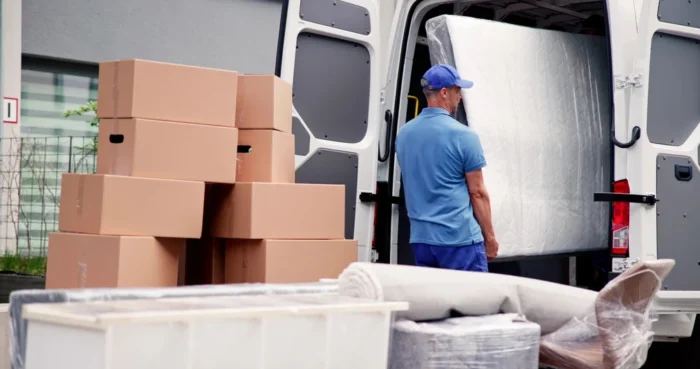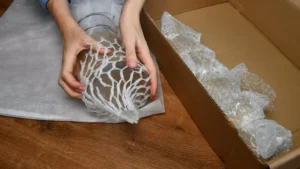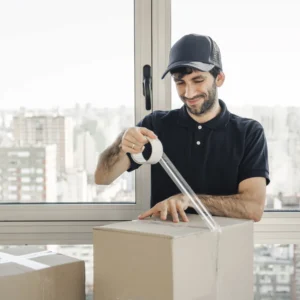Moving a mattress alone sounds simple until you’re standing in your bedroom, staring at a 70-pound queen mattress. Most mattresses weigh between 45 to 92 pounds depending on size. The awkward shape makes lifting even harder. But thousands of people successfully move mattresses by themselves every day, and you can too with the right approach.
This guide walks you through the complete process of moving your mattress solo. You’ll learn proper lifting techniques, essential equipment needs, and safety tips that protect both you and your mattress. Whether you’re relocating across town or just moving between rooms, these proven methods make the job manageable.
Understanding How to Move a Mattress Without Help
Moving a mattress without help requires planning and technique over raw strength. The key challenge isn’t just weight but the unwieldy dimensions that make balance difficult.
Mattress Size and Weight Considerations
Different mattress sizes present unique challenges. A twin mattress at 38 inches wide and roughly 45 pounds is the easiest to manage alone. Full-size mattresses at 54 inches wide and 55 pounds require more effort but remain doable. Queen mattresses measure 60 by 80 inches and weigh around 71 pounds, pushing the limits of solo transport. King-size mattresses at 76 by 80 inches and 92 pounds are extremely difficult to move alone and often require professional assistance.
Understanding your physical limits matters more than ego. If you have back problems, recent injuries, or the mattress exceeds your comfortable lifting capacity, consider calling professional movers. Experienced furniture movers can handle the job safely in minutes.
Planning Your Moving Path
The path you’ll take deserves attention before lifting anything. Walk from your bedroom to the vehicle or destination room. Measure doorways since most standard doors are 30 to 36 inches wide. Remove obstacles like shoes, boxes, or furniture that block the path. Check for tight corners where you’ll need to angle the mattress vertically.
Stairs create the biggest challenge when moving a mattress by yourself. Each step requires controlled descent while managing the full weight. Scout the stairwell width and any landings where you can rest. If your route includes outdoor elements, check the weather since rain or snow makes the mattress bag slippery and dangerous.
Prior to Moving Your Mattress, Assess Its Condition

Before investing effort into moving your old mattress, evaluate whether it’s worth the trouble. A worn-out mattress might cost more to move than replace, especially for long-distance relocations.
Signs Your Mattress Needs Replacement
Check for these warning signs that indicate replacement makes more sense. Visible sagging in the middle or edges means the internal support has failed. Lumpy areas show that filling has shifted or broken down. If you’re waking up with back pain or your sleep quality has declined, the mattress has likely exceeded its useful life.
Quality mattresses typically last 7 to 10 years with proper care. Research from Oklahoma State University found that people who replaced their mattresses every five years experienced better sleep and less back pain. Consider your mattress age alongside its condition.
Checking for Mold and Moisture Damage
Mold and mildew present health concerns that make a mattress unsuitable for moving. Check seams and undersides for dark spots or musty odors. These issues worsen when mattresses are wrapped in plastic for transport, creating ideal conditions for mold growth.
Cost Analysis: Moving vs. Replacing
Calculate the moving cost versus replacement cost. Professional movers charge based on weight and distance. A new twin mattress costs $200 to $500, while moving one across the country might cost similar amounts. For local moves, keeping your mattress makes financial sense if it’s in good condition.
The decision to keep or discard your mattress affects your entire moving strategy. Buying new means you can donate or dispose of the old one before the move, reducing your workload. Keeping it requires proper protection and careful handling during transport.
You may read How To Pack Bedding For Moving?
If You Are Moving a Mattress by Yourself, Pick the Appropriate Packaging
Proper packing protects your mattress from damage, dirt, and moisture during the move. Never attempt moving a bare mattress since floors, walls, and vehicles will soil or tear the fabric.
Preparing Your Mattress for Packing
Start by stripping all bedding including sheets, mattress pads, and protectors. The mattress must be completely dry before wrapping. Any moisture trapped inside creates perfect conditions for mold spores to develop. If you recently cleaned the mattress or it feels damp, lean it against a wall in direct sunlight for 2 to 3 hours.
Choosing the Right Mattress Bag
Purchase a mattress bag designed for your specific size. These heavy-duty plastic covers cost $8 to $15 at hardware stores, furniture retailers, or moving supply shops. The bag should fit snugly without excessive material bunching at the ends.
Slide the mattress bag over one end and pull it completely over the mattress. This works easier if you stand the mattress on its side. Once covered, use quality packing tape to seal both open ends completely. Apply tape generously since any gaps allow dirt, water, or oil to contact the mattress surface.
Adding Extra Protection Layers
For added protection during solo moves, consider wrapping the bagged mattress with moving blankets. Secure the blankets with rope or bungee cords. This extra layer cushions impacts against door frames and prevents the slippery plastic from sliding unexpectedly.
Double-check that no mattress fabric shows through the protective layers. Ground contact, puddles, and vehicle beds all pose contamination risks. The investment in proper packing materials saves the cost of professional mattress cleaning or replacement later.
Essential Equipment for Solo Mattress Transport
The right tools transform an impossible task into a manageable one. Don’t attempt moving without these essential items.
Furniture Dolly
A furniture dolly provides wheeled support that eliminates most of the carrying burden. This flat wooden platform with four wheels costs $30 to $60 to purchase or $10 to rent daily. The dolly should measure at least 18 by 30 inches to support mattress width adequately.
Straps and Securing Materials
Ratchet straps or heavy-duty bungee cords secure the mattress to the dolly and later to your vehicle. You’ll need at least two straps rated for 500 pounds or more. Rope works as an alternative but requires knowledge of proper knots to maintain tension.
Moving straps or a mattress harness distribute weight across your shoulders and back, reducing strain on your arms. These adjustable straps cost $25 to $40 and make lifting significantly easier. Some designs allow you to carry the mattress on your back, keeping your hands free for balance.
Protective Gear and Accessories
Work gloves with grippy palms prevent slipping and protect against splinters from wooden dollies or rough surfaces. The improved grip reduces the squeeze strength needed to maintain control.
Vehicle Requirements
Vehicle requirements depend on mattress size. Twin and full mattresses fit inside most cargo vans or minivans with seats folded. Queen and king mattresses require pickup trucks or rental moving trucks. An 8-foot pickup bed accommodates a twin mattress fully inside. A 10-foot moving truck holds all sizes comfortably and protects the mattress from weather during transport.
If you’re folding the mattress to fit a smaller vehicle, only do this with foam or hybrid mattresses. Never fold traditional innerspring mattresses since this permanently damages the coil structure. Even with foldable mattresses, limit the folding time to minimize stress on materials.
Step-by-Step Method to Move Your Mattress Alone
Follow this systematic approach to move your mattress safely and efficiently.
Step 1: Clear Your Path Completely
Remove all obstacles from bedroom to vehicle. Open all doors fully and prop them if they swing closed. Measure tight spots and plan how you’ll angle the mattress through them.
Step 2: Position the Dolly
Place your furniture dolly next to the bed at mattress height if possible. If the mattress sits on a frame, slide it to the edge first.
Step 3: Use Proper Lifting Technique
Stand at the mattress center with feet shoulder-width apart. Bend your knees while keeping your back straight. Grip the mattress bottom edge firmly with both hands. Lift using your leg muscles, not your back. Straighten your knees to raise the mattress.
Step 4: Balance on the Dolly
Tilt the mattress to vertical position and carefully lean it against your body. Walk backward toward the dolly while supporting the mattress weight. Lower one edge onto the dolly center, then gradually let the full mattress rest on the platform. Secure with straps immediately.
Step 5: Navigate to Your Vehicle
Push the dolly slowly while watching for obstacles. Keep the mattress balanced and perpendicular to the dolly. At doorways, you may need to angle the mattress diagonally to fit through the opening.
Step 6: Handle Stairs Carefully
Stairs require removing the mattress from the dolly. Tilt the mattress to lean against your body at a 45-degree angle. Position yourself at the lower end going downstairs. Take one step at a time, letting the mattress slide down each stair while you control the descent speed. Your body weight and friction provide braking power.
Never attempt to carry a mattress horizontally down stairs alone. The leverage working against you makes falls almost inevitable.
Step 7: Load Into Vehicle
At your vehicle, slide the mattress into the truck bed or van opening. Push from the bottom edge while walking forward. Secure with ratchet straps or bungee cords to prevent shifting during transport. Tie down all four corners if using an open truck bed.
Alternative Methods When Standard Techniques Won’t Work
Some situations require creative problem-solving beyond conventional moving methods.
The Sliding Technique
The sliding technique works well for moves within the same floor. Keep the mattress in its protective bag and simply drag it along the floor. This method causes no damage if floors are clean and clear of debris. Slide the mattress on its side edge rather than flat to reduce friction. This technique works best for short distances like room-to-room moves.
The Taco Fold Method
For narrow hallways or tight corners where vertical positioning doesn’t work, try the taco fold method. Bend the mattress gently into a U-shape to reduce its effective width. Only attempt this with flexible foam mattresses. Hold the fold position with your body as you navigate through the tight space, then release once clear.
The Shoulder Carry Method
The shoulder carry method uses moving straps positioned under the mattress to create a makeshift harness. You wear the mattress on your back like an enormous backpack. This technique keeps your hands free for balance and opening doors. It works best for lighter twin and full mattresses on straight paths without stairs.
The Blanket Sled Method
If you have a blanket and slick floors, create a makeshift sled. Place the bagged mattress on a moving blanket and pull the blanket corners. This reduces friction significantly compared to dragging the mattress directly. The method works on tile, hardwood, or linoleum but not carpet.
Critical Safety Tips to Prevent Injury
Moving heavy objects alone carries real injury risk. Follow these safety guidelines to protect yourself.
Proper Body Mechanics
Never lift with your back curved. This position puts enormous pressure on spinal discs and commonly causes serious injuries. Always bend at the knees and hips while maintaining a straight back.
Knowing Your Limits
Know when to stop and get help. If you feel sharp pain, extreme strain, or lose your grip, set the mattress down immediately. Pushing through warning signs leads to pulled muscles, herniated discs, or worse injuries. At Chamomile Go, our moving company in Sherman Oaks specializes in handling situations where DIY becomes dangerous.
Rest and Hydration
Take frequent breaks when moving long distances. Muscle fatigue increases injury risk dramatically. Rest for 2 to 3 minutes after every major segment of the move.
Stay hydrated, especially during warm weather. Dehydration reduces strength and coordination, making accidents more likely. Drink water before starting and keep a bottle accessible.
Protective Equipment
Wear proper footwear with good traction and toe protection. Never move a mattress while wearing sandals, socks, or loose shoes. If you drop the mattress on your foot, proper shoes prevent broken bones.
Avoiding Pinch Points
Watch for pinch points where the mattress might trap your fingers against door frames or vehicle edges. Keep your grip on the mattress edges, never inserting fingers into gaps or under the mattress where they can get crushed.
When to Call Chamomile Go for Professional Help
Some situations make professional help the smart choice regardless of budget concerns.
Oversized Mattresses
King-size mattresses at 92 pounds exceed safe solo lifting limits for most people. The dimensions also make doorway navigation extremely difficult alone. At Chamomile Go, our professional furniture movers have trained teams and specialized equipment designed for oversized items.
Complex Stairway Navigation
Multi-story moves involving long or steep staircases create serious safety hazards. One missed step while controlling a heavy mattress can cause falls resulting in significant injuries. Our team carries full insurance and extensive training for exactly these scenarios.
Physical Limitations
Physical limitations including back problems, recent surgeries, or limited strength make solo mattress moving inadvisable. Your health costs far more than hiring help. Chamomile Go offers affordable rates that protect both your wellbeing and your belongings.
Time-Sensitive Moves
Time constraints sometimes justify professional assistance. What takes you 2 hours of struggling takes our experienced movers 20 minutes. If you’re coordinating a complex move with tight timelines, paying for speed and reliability makes sense.
Long-Distance Relocations
Long-distance moves benefit from professional packing and transport. Chamomile Go provides climate-controlled trucks that protect against weather damage during transit. We handle the entire loading and unloading process, so you can focus on other moving tasks.
Our moving company in Sherman Oaks serves the greater Los Angeles area with comprehensive relocation services. From single-item moves like mattresses to complete household relocations, we make moving stress-free and efficient.
Conclusion
Moving a mattress without help is achievable with proper planning, equipment, and technique. Twin and full mattresses work well for solo moves, while queen-size mattresses push physical limits. When the task feels overwhelming, Chamomile Go is here to help. Contact us today for a free moving estimate and experience stress-free relocation with our expert team in Sherman Oaks.
FAQs
Can one person move a king-size mattress?
Technically possible but not recommended. King mattresses weigh up to 92 pounds and measure 76 by 80 inches, making them extremely difficult to control alone. The injury risk outweighs any savings from not hiring help.
What’s the easiest way to move a mattress by myself?
Use a furniture dolly for wheeled transport and keep the mattress vertical when navigating doorways. The sliding method works well for room-to-room moves on the same floor. Always protect the mattress with a proper bag first.
Do I need a truck to move my mattress?
It depends on mattress size and flexibility. Twin and full mattresses fit in most cargo vans or minivans. Queen and king mattresses require pickup trucks or rental moving trucks unless you’re moving very short distances where you can carefully maneuver them through doorways.
How do I get a mattress down stairs alone?
Position yourself at the lower end with the mattress tilted at a 45-degree angle against your body. Descend one step at a time, letting the mattress slide down each stair while you control the speed with your body weight. Never attempt to carry it horizontally down stairs.
Should I fold my mattress to fit it in my car?
Only fold foam or hybrid mattresses, and only temporarily. Never fold innerspring mattresses since this permanently damages the internal coils. Even foldable types should be unfolded as quickly as possible to prevent material stress and deformation.








